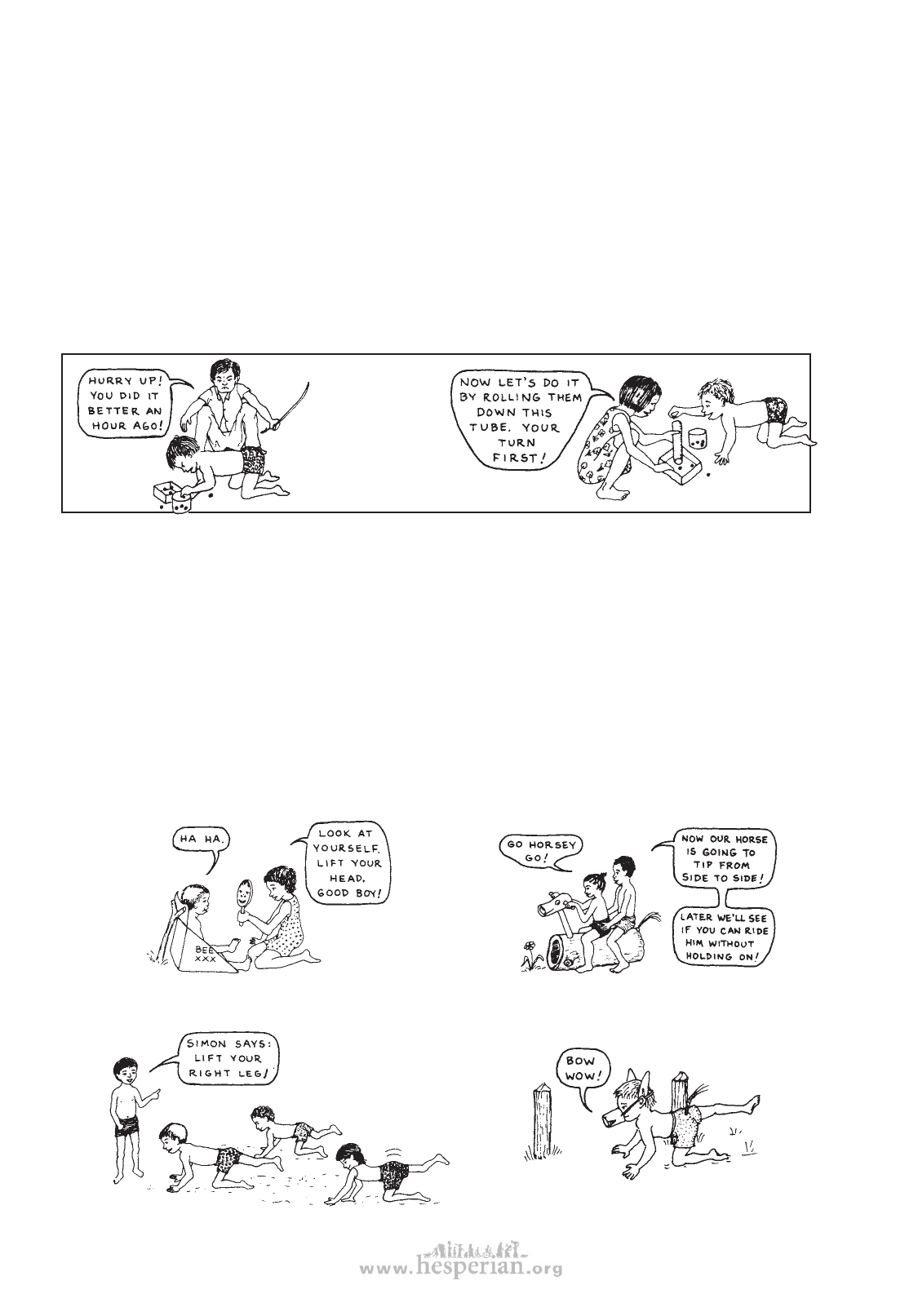
316 chapter 35
8. Early play activities and toys
Play is the way children learn best. So try to turn every activity you do with a
child into some kind of play or game.
It is not what you do, but how you do it that makes something play. As long as it is
fun and the child wants to do it, it is play. But if it stops being fun, or the child does it
only because ‘he has to’, it stops being play. Small children (and big children who learn
slowly) only stay interested in the same thing for a short time. The child soon gets
bored and stops learning. Therefore, for activities to be play and stay play,
1. continue with the same activity for a short time only, and
2. look for ways to keep changing the activity a little so that it is always new and
interesting.
Both boys in these
pictures are doing
the same learning
activity. For one,
it is play. For the
other, it is not.
Can you say why?
Not all play has to be organized or planned; often the child learns most when it is
not. Play needs some aspect of adventure, surprise, and freedom. It is important
that a child learn to play with other children. But it is also important that she be
given the chance and encouraged to play alone. She needs to learn to enjoy and live
with other people—and with herself.
We do not talk much about play separately, because mostly it is not a separate
activity. It is the best way to do almost any activity. For this reason, in this whole
chapter—and book—we often give ideas for turning exercise, therapy, and learning into
play.
Play activities, like other activities, should be picked so that they ‘fit’ a child’s level
of development and help him move one step farther. They should be HARD ENOUGH
TO BE INTERESTING, but EASY ENOUGH TO BE DONE WELL. For example:
If the child
is at the
level of a
very young
baby, play
games that
help him
use his
eyes and
hold up
his head.
If the child is
at the level
where she
sits, but finds
it hard to
keep her
balance or
open her
knees, look
for play that
helps her
with these.
If in preparation for standing and walking the child needs practice shifting weight
from one knee to the other, you might try imitation games. Here are 2 ideas:
Disabled village Children